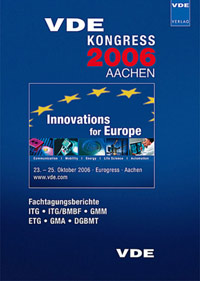Mobile station localization by combining measurements from different sources including reliability information
Konferenz: VDE-Kongress 2006 - Innovations for Europe - Fachtagungsberichte der ITG/BMBF - GMM - ETG - GMA - DGBMT
23.10.2006 - 25.10.2006 in Aachen, Germany
Tagungsband: VDE-Kongress 2006
Seiten: 6Sprache: EnglischTyp: PDF
Persönliche VDE-Mitglieder erhalten auf diesen Artikel 10% Rabatt
Autoren:
Fritsche, Carsten; Klein, Anja (Technische Universität Darmstadt, Fachgebiet Kommunikationstechnik, Merckstr. 25, 64283 Darmstadt, Germany)
Schmitz, Heiko (Siemens AG, COM MN PG NT AM 3, Siemensdamm 62, 13627 Berlin, Germany)
Inhalt:
In recent years, the demand for localization methods (LMs) offering precise mobile station (MS) position estimates has increased due to the introduction of location based services and the requirement of promptly alerting rescue services in case of emergency. In dense urban and indoor scenarios, the existing Global Navigation Satellite System (GNSS) based LMs fail and the cellular radio network (CRN) based LMs do not reach the desired localization accuracy. Each LM is based on the combination of information on the MS position provided by measured values (MVs). In this paper, a novel hybrid LM is proposed that is based on the combination of information on the MS position available from different MVs of the CRN and GNSS. The problem of combining information on the MS position available from different MVs is solved by determining for each MV the conditional probability density function (cpdf) of the MS position conditioned on the given MV. The cpdf for each MV can be determined from a model for the MV (MM) that is introduced. The MM contains the functional relationship between the MV and the MS position, and a model for the errors each MV is affected with. The most probable MS position can be found by combining the cpdfs of the different MVs. As an example, the MMs and cpdfs of MVs from the CRN, namely Received Signal Strength and Round Trip Time and from the GNSS, namely Time of Arrival are presented. Based on a GSM and GPS network scenario, the proposed hybrid LM is verified by means of simulations. The simulation results show that combining MS position information of MVs from the CRN and GNSS significantly enhances the localization accuracy compared to combining only the MS position information of MVs from the CRN.


